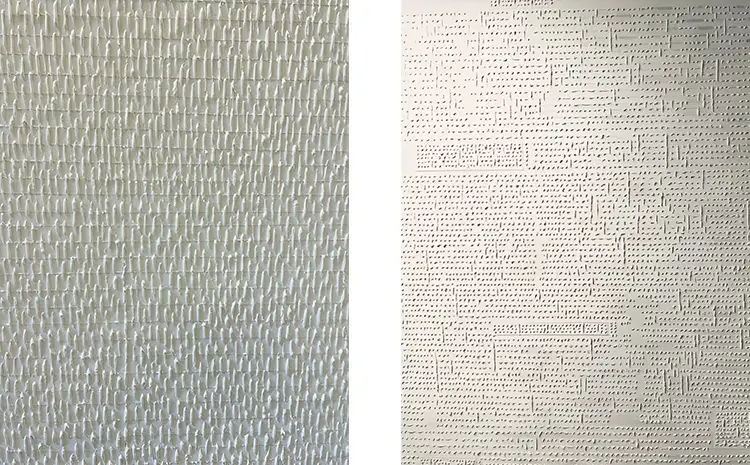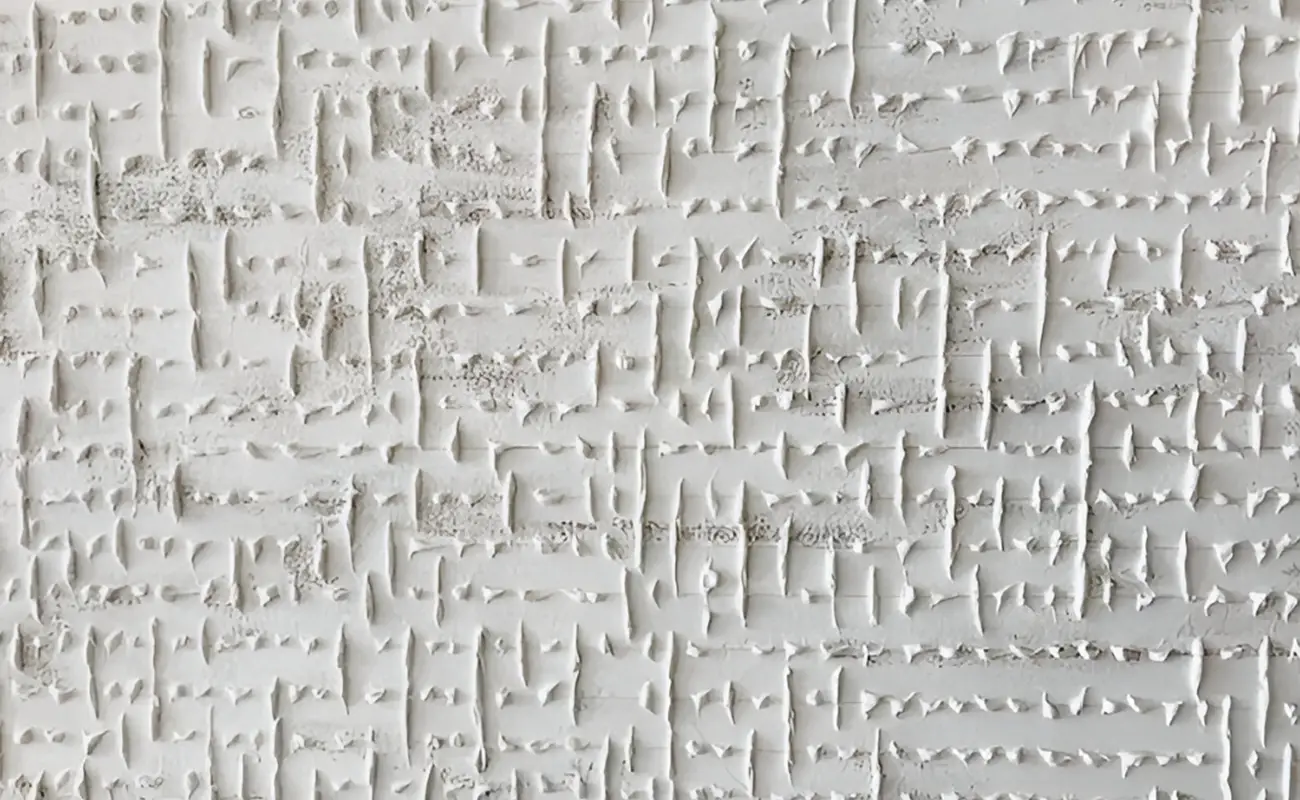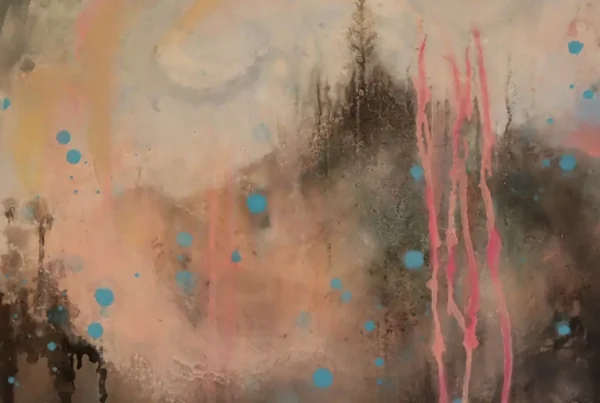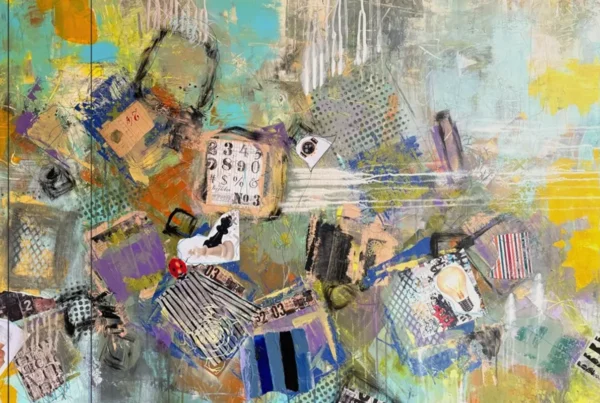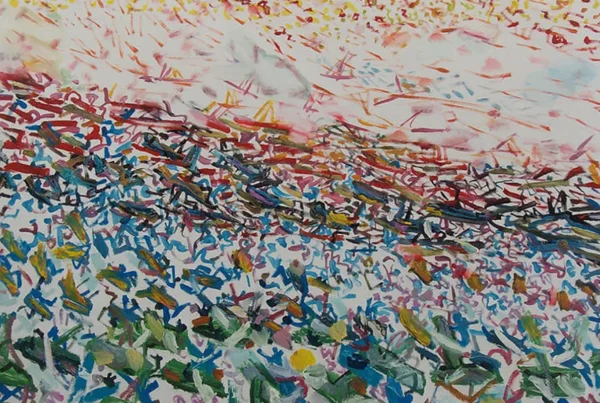“The idea of ‘circuit’ has become my obsession and main concept.”
From Kraków to New York: A Journey Through Form and Thought
The trajectory of Roman Kujawa‘s artistic evolution traces a path from the streets of Poland to the sprawling energy of New York City, forming a narrative where personal history, academic rigor, and global experience intersect. Born and raised in Poland, Kujawa’s interest in painting surfaced at the age of seven, sparked by the influence of a gifted cousin. Encouraged by this early exposure, he pursued his passion academically, graduating from a Fine Arts High School where he garnered accolades through numerous art competitions and organized his first solo exhibition focusing on abstraction. These foundational years provided a disciplined yet exploratory backdrop for what would become a lifelong engagement with visual complexity and conceptual depth.
Kujawa continued his studies at the Academy of Fine Arts in Kraków, earning his Master’s degree and refining his abstract inclinations into a more conceptually anchored practice. A year after completing his formal education in Poland, he moved to New York—a city that would become his home for the next 40 years. It was there, amid the city’s ceaseless dynamism, that his artistic identity was truly shaped. Just as Picasso’s Cubism did not emerge in Spain but in the ferment of Paris, Kujawa’s mature voice as an artist emerged not from his homeland, but from the layered, electric environment of New York. He enrolled at the School of Visual Arts and earned a second Master’s degree in Painting, marking the beginning of a transformative four-decade chapter. Over those 40 years, the city became both a studio and crucible—fueling a rigorous and evolving practice rooted in global dialogue and conceptual experimentation.
Now residing in Florida, Kujawa reflects on a life marked by steady artistic growth and shifting landscapes. His website, romankujawa.com, chronicles this journey, offering insight into a portfolio shaped by time, space, and thematic persistence. Despite geographic changes, Kujawa’s commitment to integrating natural forms, digital structures, and philosophical inquiry remains unwavering. His work resists categorization, emphasizing instead the importance of concept over form, and process over spectacle—a principle that originated in his early years and continues to underpin his mature practice.
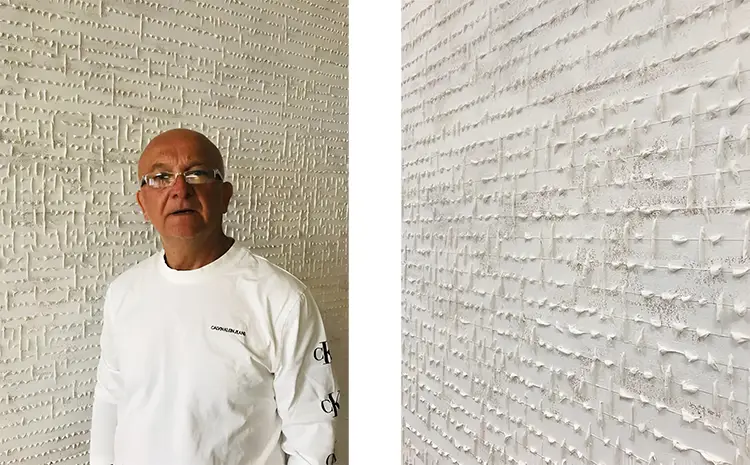
Roman Kujawa: Between Circuits and Stone
Roman Kujawa’s work thrives at the intersection of technological abstraction and ancient symbology. Rather than subscribing to the minimalist ethos often attributed to him, Kujawa aligns more closely with conceptual art, where ideas drive the structure and form. For over thirty years, the notion of the “circuit” has defined his creative output—not merely as a physical or electronic configuration, but as a metaphor for the way information is transmitted, processed, and embedded in cultural memory. This obsession with the circuitry of information has led him to draw parallels between modern data systems and early forms of communication, including cuneiform writing, quipu knots, and Egyptian hieroglyphs. In his pieces, viewers encounter visual analogs to both integrated microchips and stone inscriptions, evoking connections that span millennia.
His landmark exhibition debut in New York occurred at the Drawing Center Gallery during the group show “Selection 22.” Out of ten artists featured, a New York Times review singled out Kujawa and one other, acknowledging their standout contributions. That moment marked a pivotal turn, affirming his place within the competitive New York art circuit and cementing the resonance of his unique visual vocabulary. The critical recognition served not only as validation but also as motivation to continue exploring his conceptual framework, particularly the philosophical tensions between ancient knowledge systems and modern technological infrastructures.
Kujawa’s aesthetic resists traditional categorization. His intricate compositions evoke both the complexity of microelectronic circuits and the fragile beauty of forgotten alphabets. One critic aptly described his work as “downright fragile,” juxtaposing the mechanical precision of digital components with the solemn weight of human history. This tension—between the cold mechanics of the contemporary world and the expressive urgency of ancient voices—is the beating heart of Kujawa’s practice. His artworks invite contemplation not through overt drama but through subtle visual languages that suggest a simultaneous reverence for innovation and ancestry.
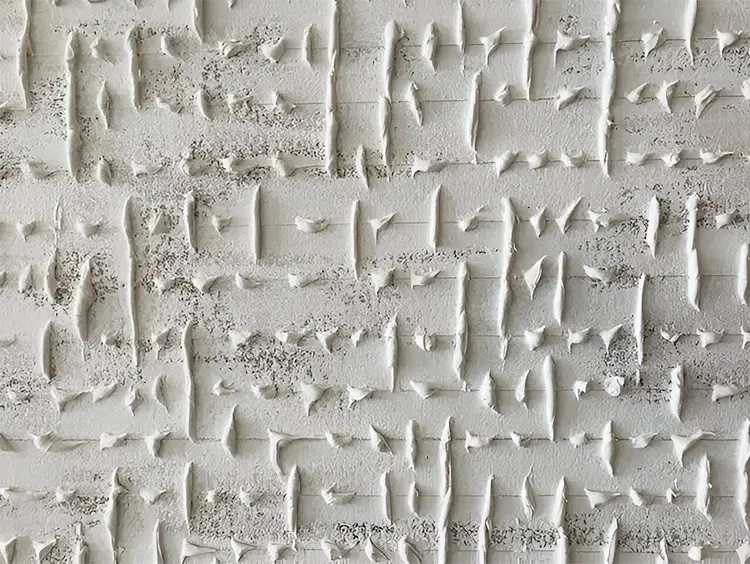
Architecture, Nature, and the Algorithm of Thought
Inspiration for Kujawa’s work is rooted in the observation of natural and urban environments, especially where the two meet and collide. He is particularly drawn to the shoreline, where ocean waves scatter debris—logs, stones, fragments of nature—across sandy borders. These organic encounters offer not only visual textures but also conceptual entry points for understanding chaos and structure. The rhythm of the tides, the layering of earth and water, and the unpredictability of erosion inform his artistic logic, where repetition becomes a contemplative practice rather than a mechanical routine. This attention to natural detail also finds expression in his use of materials, combining organic sensibility with industrial sharpness.
Urban architecture exerts an equally powerful influence. Kujawa is fascinated by the repetitive geometry of buildings, especially the endless grid of windows and the multiplicity of surfaces that shape metropolitan life. In these cityscapes, he discovers not just physical structures but patterns of human behavior, organization, and perception. For him, buildings are not static objects but dynamic systems—networks of design and function that reflect broader cultural circuits. These visual and structural rhythms echo in his artworks, where recurring forms and materials mimic the architectural logic of city environments while also questioning their implications.
Kujawa’s creative process is deeply intentional. His workspace demands order, which he believes fosters emotional clarity and focus. He emphasizes the meditative nature of repetition in his practice, likening it to chanting or poetry, where meaning arises through sustained engagement rather than sudden impact. The experience he seeks to offer viewers is one of stillness and intellectual stimulation, rather than emotional agitation. This preference aligns with his admiration for haiku—a poetic form known for its precision and spiritual brevity. Through his use of stainless steel wires and modeling paste, often shaped into dense, circuit-like surfaces, Kujawa constructs visual mantras that prompt reflection and invite viewers to travel inward.
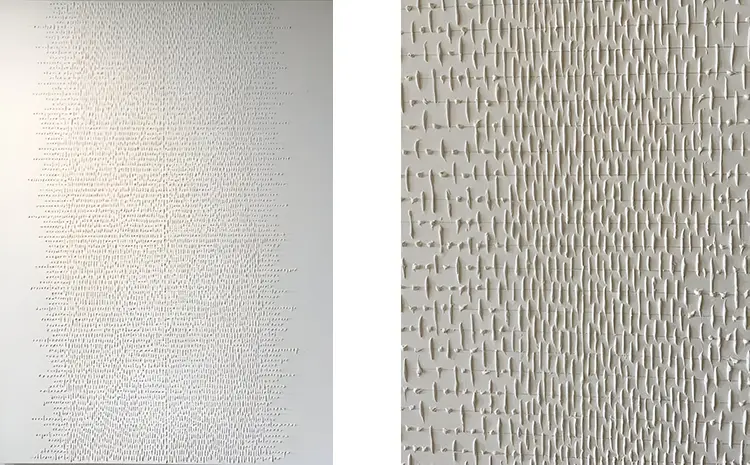
Roman Kujawa: The Weight of Memory and Material
Throughout his career, Kujawa has remained attentive to the philosophical implications of materiality and memory in art. His preferred medium—stainless steel wires and modeling paste—emerged through a period of experimentation. Initially, he incorporated small stones into his works, but later refined his materials to focus on wires and paste, sometimes adding fragments of canvas to the surface. This evolution mirrored his growing interest in form as a carrier of meaning, where each component contributes to the larger concept of circuit-based expression. Prior to this focus, Kujawa also explored a range of media including photography, oil painting, sculpture, and fresco techniques. These early explorations laid the groundwork for the distinctive visual language he employs today.
He holds a particular admiration for artists who, like himself, have committed to long-term conceptual pursuits. Roman Opalka, known for his systematic recording of numerical sequences to mark the passage of time, is one such influence. Kujawa resonates with Opalka’s dedication to documenting existence through artistic ritual. Similarly, Ursula Von Rydingsvard’s tactile sculptures, Jackie Winsor’s material consciousness, and Jonathan Borofsky’s emotionally charged installations have each contributed to Kujawa’s sensibility. Borofsky’s piece connecting wartime photographs with electric light remains especially impactful to him, for its powerful evocation of memory and loss through minimalist yet charged interventions.
One artwork that has left an indelible mark on Kujawa’s thinking is Marcel Duchamp’s infamous “PISSOIR” (or “Fountain”). The audacity of introducing a utilitarian object into the art context profoundly shaped Kujawa’s understanding of conceptual boundaries. While he respects the intellectual rupture Duchamp instigated, he also acknowledges the chaos it unleashed—opening the door to speculative freedoms that, in his view, risk undermining the core values of artistic integrity. That tension between innovation and erosion, concept and craft, continues to inform his own work, driving his ongoing pursuit to reconcile structure with expression, and technology with timelessness.
